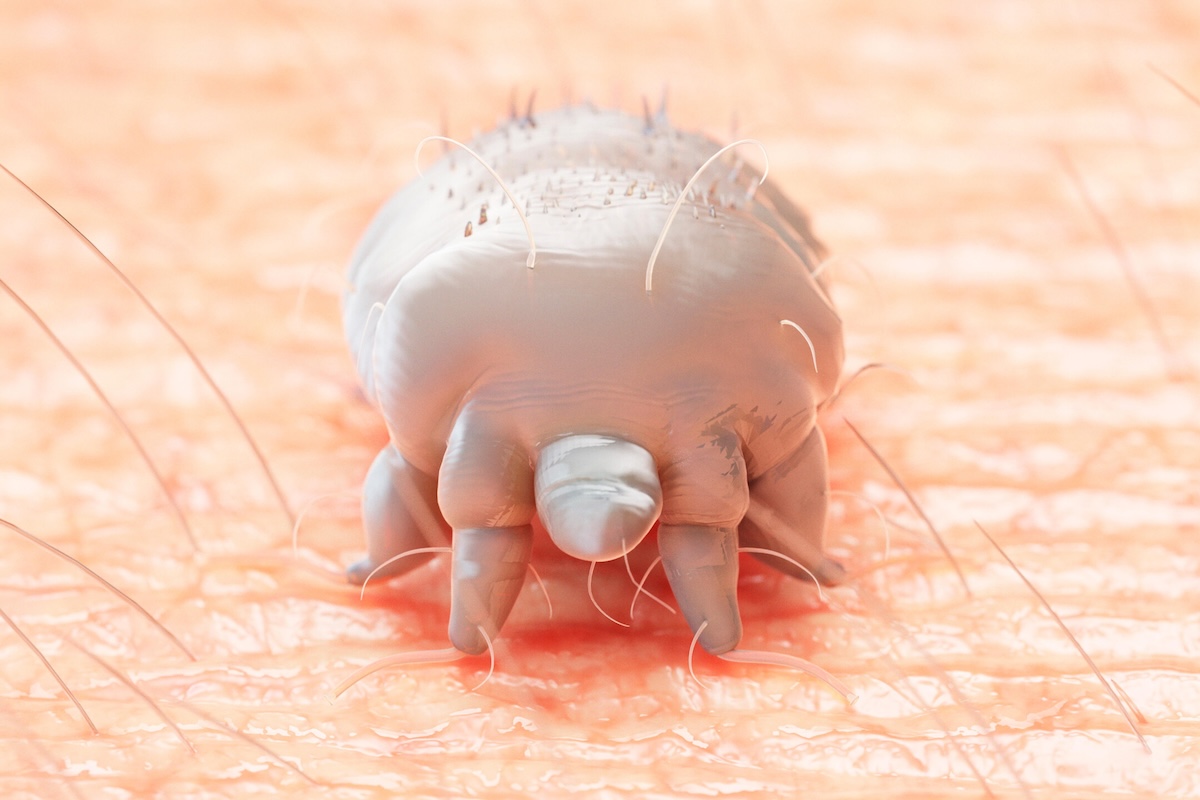Scabies is a skin condition caused by tiny mites that burrow into the top layer of your skin. These mites are so small you can’t see them with the naked eye, but they can cause intense itching and a rash that spreads quickly. Scabies is highly contagious and can affect anyone, no matter their age, hygiene, or background.

Even though the idea of mites living in your skin might sound scary, scabies is a common condition and can be treated effectively with the right medication and care. The most important step is recognizing the signs early and getting treatment to avoid spreading it to others.
What Causes It and How It Spreads
Scabies is caused by a microscopic mite called Sarcoptes scabiei. These mites dig into the skin and lay eggs. This causes an allergic reaction in most people, leading to symptoms like itching and rashes. The itching can become especially intense at night.
Scabies spreads through close, prolonged skin-to-skin contact. It’s often passed between family members, sexual partners, or people who live or sleep in close quarters. It doesn’t spread from quick contact like a handshake, but it can also spread through shared bedding, towels, or clothing that was recently used by someone with scabies.
Crowded places like nursing homes, prisons, and childcare centers are more likely to have outbreaks due to the close contact between people.
Types of Scabies
There are two main forms of scabies. The most common type is called classic scabies. This is what most people experience, and it causes intense itching and a rash on the skin where mites burrow.
Another, more severe form is called crusted scabies (also known as Norwegian scabies). In this type, the skin becomes thick, crusty, and filled with mites. It’s more common in people with weakened immune systems or those who cannot feel itching, like elderly individuals or people with certain disabilities. Crusted scabies is extremely contagious and much harder to treat.
Symptoms to Watch For
The most common symptoms of scabies include:
-
Intense itching, especially at night
-
A rash with small red bumps or blisters
-
Thin, wavy lines on the skin (these are the burrows made by the mites)
-
Sores caused by scratching, which can lead to skin infections
The rash can appear anywhere, but it often shows up between the fingers, on the wrists, elbows, waist, buttocks, and genitals. In children and babies, it may also be found on the face, scalp, palms, and soles of the feet.
It can take four to six weeks for symptoms to appear after someone is first infected. However, if you’ve had scabies before, symptoms can show up much faster—within a few days—if you’re exposed again.
How Scabies Is Diagnosed
If you think you have scabies, it’s important to see a doctor. A healthcare provider can usually diagnose scabies by looking at your skin and asking about your symptoms. In some cases, they may take a scraping of the affected skin to examine under a microscope. This can confirm the presence of mites, eggs, or mite droppings.
Sometimes, a doctor may use a magnifying glass or a special ink test to look for burrows in the skin.
Early diagnosis is important to prevent spreading it to others. Anyone who has been in close contact with someone who has scabies should also be checked and treated if needed, even if they don’t have symptoms yet.
Treatment Options
Scabies won’t go away on its own—it needs medical treatment to kill the mites and their eggs. Treatment usually includes:
-
Prescription creams or lotions: The most common treatment is a topical cream called permethrin. You apply it all over your body from the neck down and leave it on overnight. Sometimes, a second application is needed a week later to kill any new mites that may have hatched.
-
Oral medications: In more serious cases, like crusted scabies or if topical treatments don’t work, doctors may prescribe ivermectin, a pill that helps kill the mites.
-
Antihistamines or steroid creams: These may help relieve itching and reduce inflammation while the treatment is working.
-
Treating close contacts: Anyone who has had close contact with a person diagnosed with scabies should be treated at the same time, even if they don’t have symptoms. This includes household members and intimate partners.
-
Washing clothing and bedding: All clothing, bed sheets, and towels used within the last 3–4 days should be washed in hot water and dried on high heat. Items that can’t be washed can be sealed in a plastic bag for at least 3 days to kill any mites.
Even after treatment, itching may last for a few weeks. This is normal and doesn’t mean the mites are still there. Your skin is reacting to the dead mites and eggs, and the irritation may take time to calm down.
Living With and Preventing Scabies
Having scabies can be uncomfortable and frustrating, especially with the itching and risk of spreading it to others. But the good news is that with proper treatment, most cases clear up within a few weeks.
To help prevent scabies:
-
Avoid close skin contact with someone who has scabies until they are treated
-
Don’t share clothing, towels, or bedding with someone who may be infected
-
If there is an outbreak in a community setting (like a school or care home), follow public health guidance and treat affected individuals and their close contacts promptly
Most people recover quickly once they receive the right treatment. If symptoms continue after a full course of treatment, it’s important to follow up with your doctor to make sure the scabies are gone or to rule out other skin conditions.

